
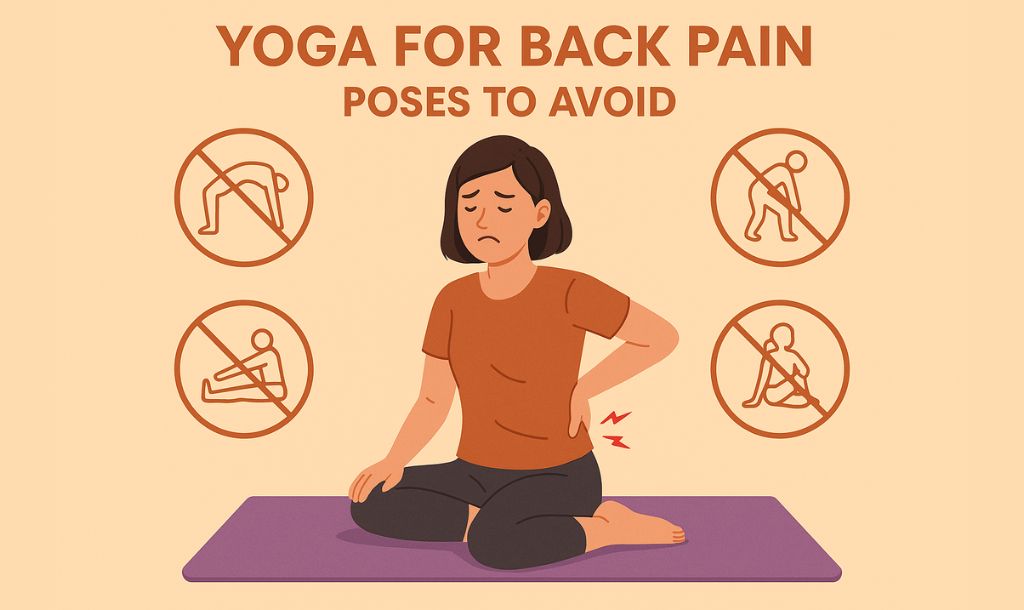
Living with back pain can make even simple daily movements challenging, and the wrong exercise routine can make things worse.
While yoga is often recommended as one of the safest and most effective ways to strengthen the spine, improve flexibility, and ease discomfort, not every pose is appropriate. In fact, there are specific lower back pain yoga poses to avoid, as they can put extra strain on the discs, muscles, and nerves in your back.
For maximum relief and to prevent further injury, yoga must be practiced with proper guidance — especially if you’re managing conditions such as a herniated disc, degenerative disc disease, or spinal stenosis.
To help you stay safe, here are 10 yoga poses to avoid with lower back pain, along with safe alternatives.
Read our detailed guide on yoga for lower back pain here!
Back pain can show up differently for each person. Below are a few yoga poses to avoid, along with safer alternatives:
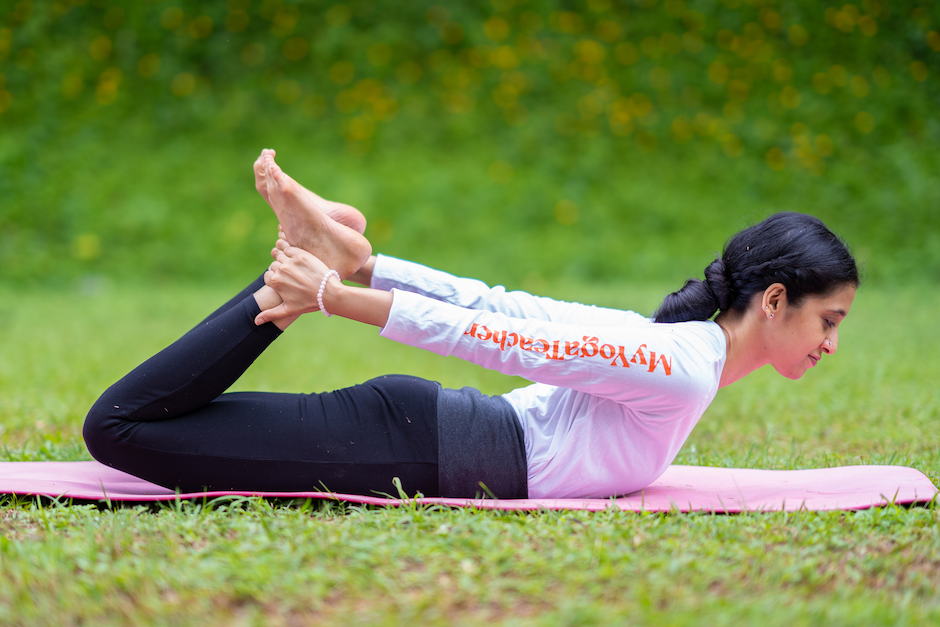
When done correctly, Bow Pose strengthens the glutes, opens the shoulders and chest, and stretches the thighs.
However, for people with back issues, this intense backbend can do more harm than good. It may overstretch the lumbar spine instead of activating the glutes and thighs.
Particularly avoid if you have:
Safe Alternatives:
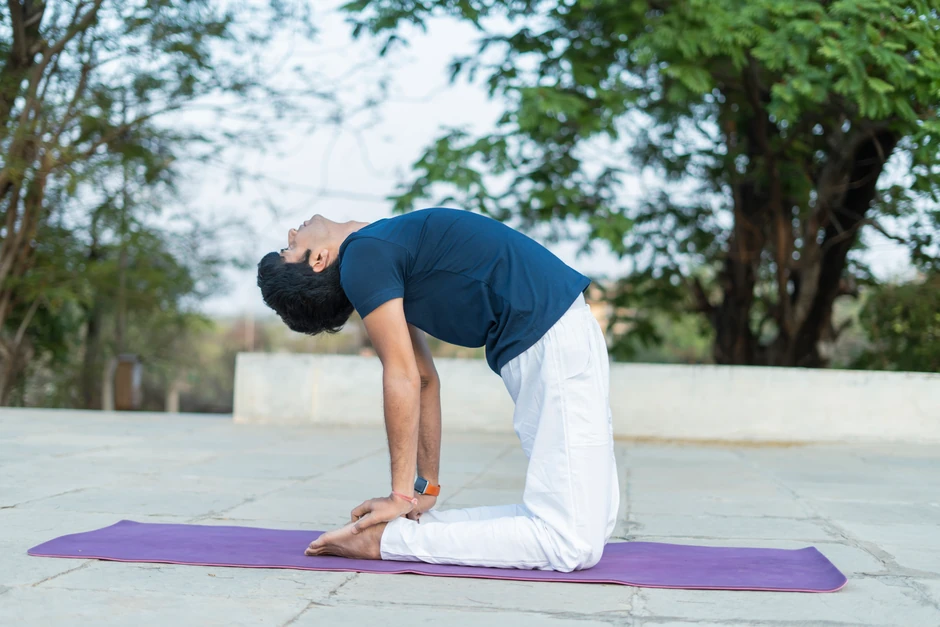
Camel Pose deeply opens the front body but puts significant stress on the lower back, sacrum, and neck. Even its modified versions can aggravate pain if you have spinal issues.
Avoid if you have:
Safe Alternatives:
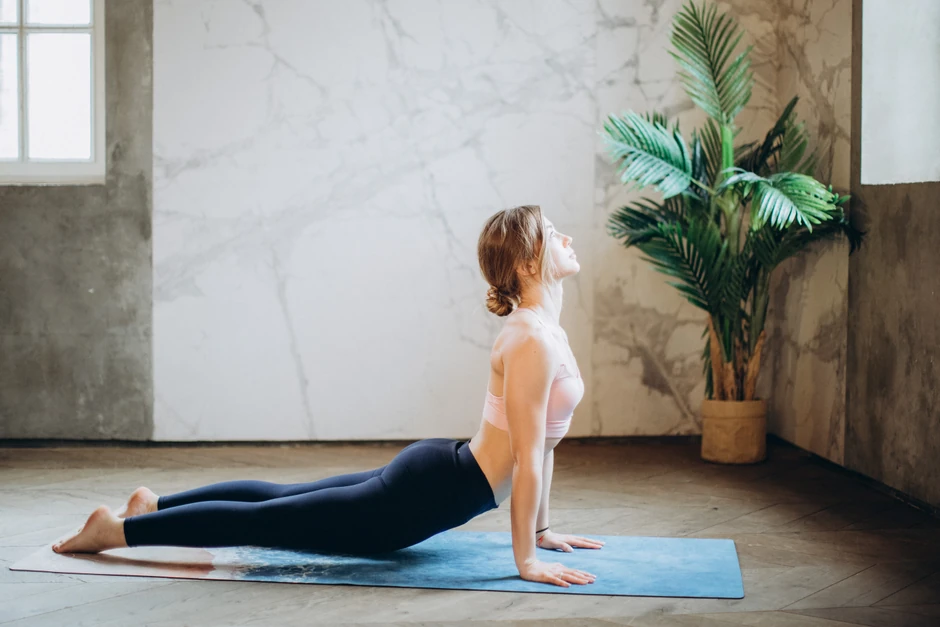
This pose is powerful for strengthening glutes and stretching the core, but it’s easy to misalign, especially in fast flows like Vinyasa. Done incorrectly, it can compress the lower spine and aggravate pain.
Avoid if you have:
Safe Alternatives:
Twisting poses can be therapeutic in some contexts, but dangerous if you have disc problems. Crescent Lunge Twist requires balance and spinal rotation that often leads to forced movements.
Avoid if you have:
Safe Alternatives:
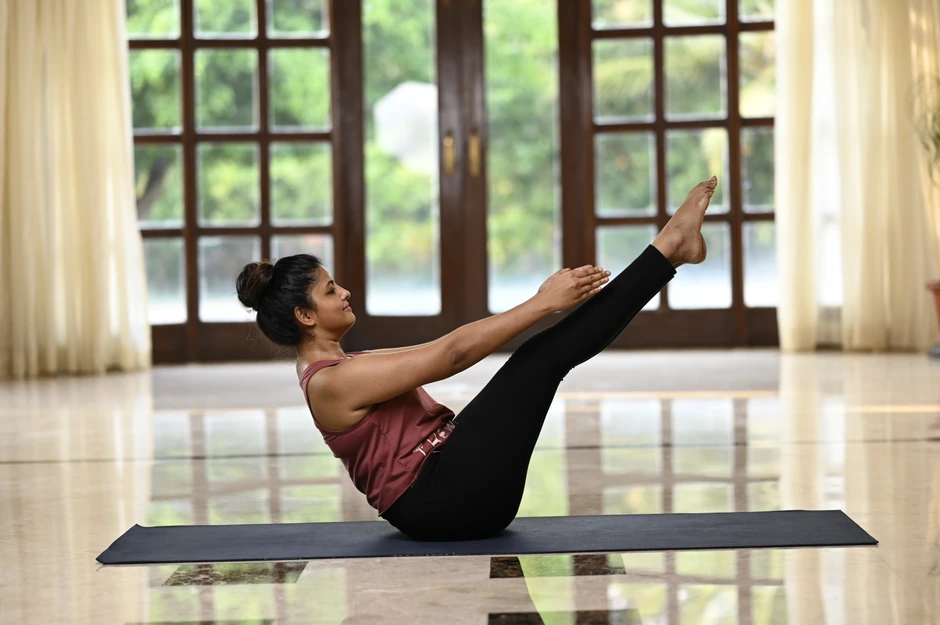
Boat Pose strengthens the core but puts pressure on the sacrum and lumbar spine. Without a strong core, it often leads to slouching and poor posture.
Avoid if you have:
Safe Alternatives:

Full Wheel especially demands strong glutes and arms, and involves deep extension, which is not safe for many back conditions.
Avoid if you have:
Safe Alternatives:
[inline-CTA-1]
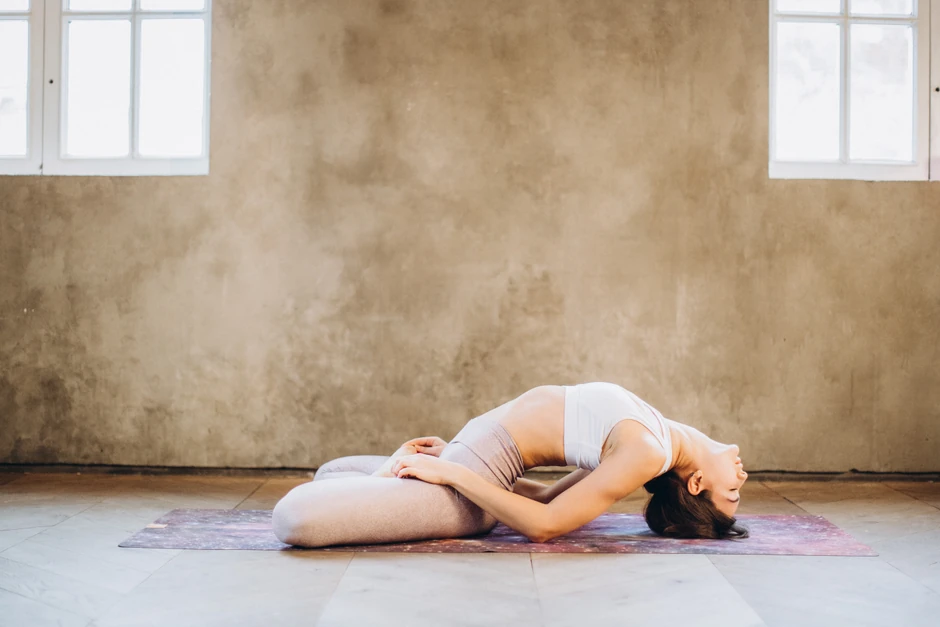
While restorative in mild cases, Fish Pose is still a backbending posture that lacks pelvic and sacral support. It can be risky for serious back conditions.
Avoid if you have:
Safe Alternatives:
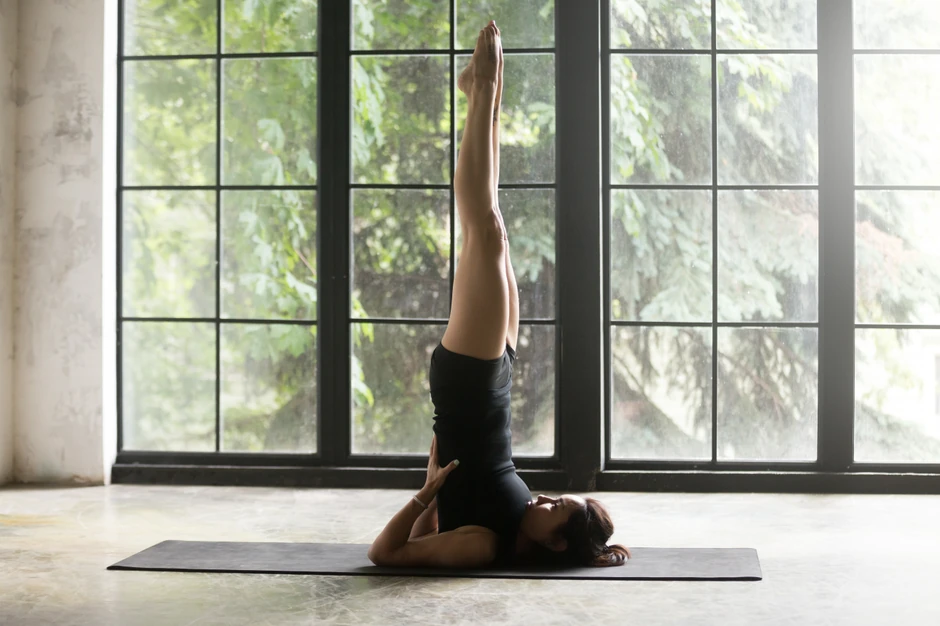
Shoulder Stand compresses the cervical spine, which can transfer strain to the lumbar region. It’s especially unsafe without strong core and shoulder flexibility.
Avoid if you have:
Safe Alternatives:

A standing backbend, Dancer’s Pose is beautiful but risky. It creates intense lumbar compression and requires excellent balance.
Avoid if you have:
Safe Alternatives:
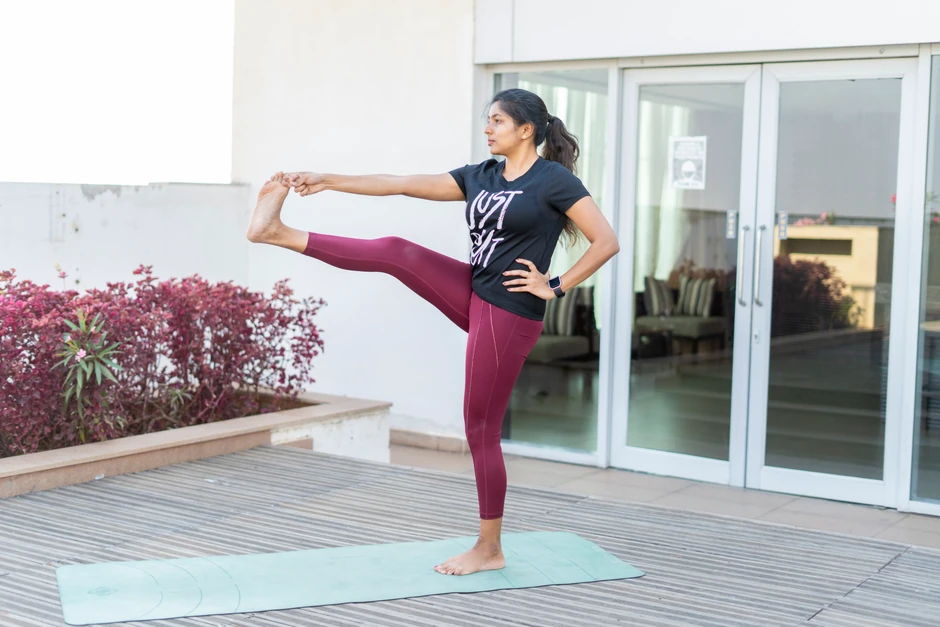
This forward fold compresses the spine and pelvis, tilting the lumbar region backward and straining the discs. Even modified versions are unsafe if you have back pain.
Avoid if you have:
Safe Alternatives:
[GC]
Not all back pain is the same, and the poses you should avoid may vary depending on your condition. Here’s a breakdown of which yoga poses to avoid if you’re dealing with a herniated disc, degenerative disc disease, spinal stenosis, or general lower back pain.
If you’re dealing with a herniated or bulging disc, avoid poses that increase disc pressure or involve deep forward folds and twisting.
Avoid:
These movements can aggravate disc bulges, create nerve compression, and increase lower back pain.
Degenerative disc disease requires minimizing deep extensions and strong compressive forces on the spine.
Avoid:
Intense backbends and unsupported core poses accelerate disc wear and worsen pain.
Spinal stenosis narrows the spinal canal, so extension-based postures can make symptoms worse.
Avoid:
These deep backbends and extensions narrow the canal further, increasing nerve compression.
For nonspecific lower back pain, be cautious of poses that put pressure on the lumbar spine or sacrum.
Avoid:
These postures strain the lumbar region, compress the sacrum, and can worsen muscle tightness.

[inline-CTA-2]
While it’s essential to avoid risky movements, safe yoga practice can strengthen your spine and relieve discomfort. Keep these guiding principles in mind:
If you have lower back pain or conditions like a herniated disc, spinal stenosis, or degenerative disc disease, avoid poses that overstretch or compress the spine. These include:
These movements place extra stress on the lumbar spine and may worsen pain or injury.
Yes. While yoga can be highly therapeutic, certain poses can worsen back pain if practiced incorrectly, without props, or without proper guidance. Overstretching or muscling into positions may aggravate conditions like herniated discs, spinal stenosis, or degenerative disc disease. Always consult a healthcare provider before starting a new routine, and work with an experienced yoga teacher for safe modifications.
Book your free 1-on-1 session today!
Gentle, supportive poses are best. Safer options include:
These encourage relaxation and mobility without compressing the lower spine.
Yoga can still be beneficial with a herniated disc, but only with a doctor's approval and proper modifications. Avoid deep forward folds, strong twists, and intense backbends, which increase disc pressure.
Instead, focus on restorative and gentle strengthening poses that support the spine, such as Bridge Pose with props, Pelvic Tilts, and Cat-Cow variations.
Always practice under the guidance of a qualified yoga coach.
Yes, yoga can help relieve discomfort from spinal stenosis when practiced safely. However, you should avoid extension-based poses like Upward-Facing Dog or Camel Pose, which narrow the spinal canal further.
Instead, focus on gentle forward bends with support, hip-opening stretches, and core-strengthening poses that reduce pressure on the lower back.
Gentle strengthening is key to protecting the lumbar spine. Safe options include Bird Dog (Dandayamana Bharmanasana) to build stability, Bridge Pose with a block for controlled activation, and Cat-Cow to improve mobility while strengthening surrounding muscles.
These poses support spinal health without overstressing the discs or joints.


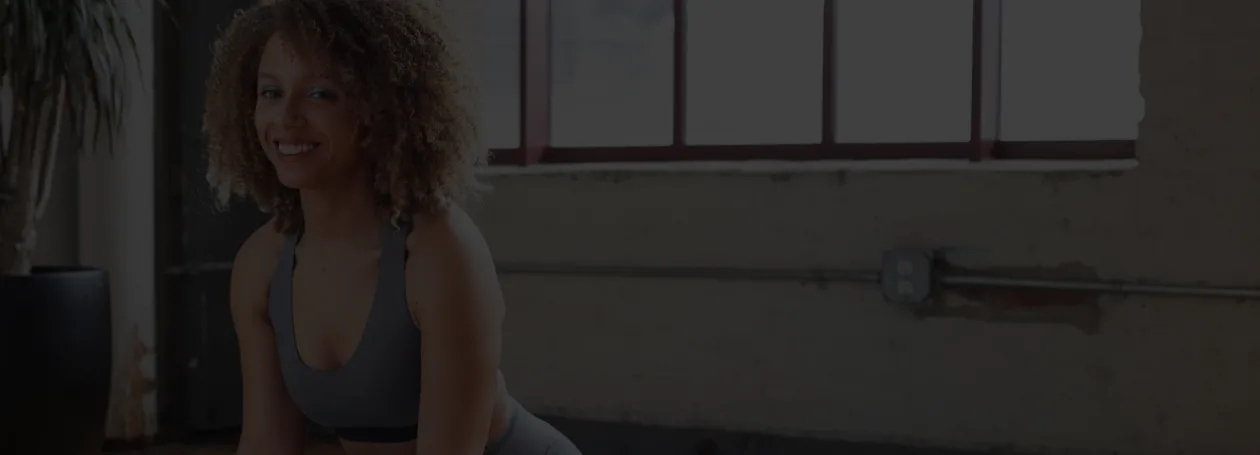
Receive personalized guidance tailored to your unique fitness goals, live with a dedicated coach—no credit card required.